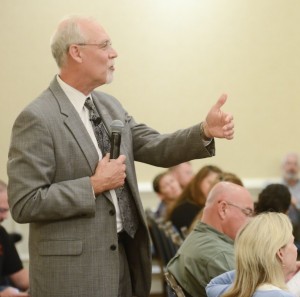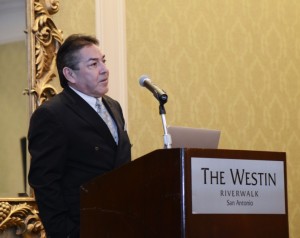
A record number of people attended this year’s Traffic Safety Conference, organized by the Texas A&M Transportation Institute’s Center for Transportation Safety (CTS). More than 300 people attended the statewide event in San Antonio, Texas, May 12–14. The event, now in its sixth year, usually attracts about 200 people.
“We tried to expand and diversify our breakout sessions to include more aspects of traffic safety, including the efforts to improve our roadways and special problems the state is facing,” says CTS Director Robert Wunderlich. “Among other topics, the breakout sessions examined the I-35 Safety Task Force, wrong-way driving research and countermeasures, and the growing energy sector challenges. I’m very pleased and thankful for those that were willing to share their experiences and donated their time for others. We really wanted to bring in a divergent set of voices.”
Among the presenters this year was David Jimenez, a neurosurgeon with The University of Texas Health Science Center in San Antonio. Jimenez detailed his work with traumatic brain injuries, a common medical problem associated with serious traffic crashes. Jimenez told the crowd that a crash happens in Texas every 75 seconds. He described the recent advances in brain surgery techniques and in-the-field treatments.

“Dr. Jimenez was able to demonstrate the very real consequences of what happens beyond the crash scene,” Wunderlich says. “I think it was important for all of us to be reminded about the human impact of what we do, beyond the statistics. We try to save lives through our work, and Dr. Jimenez showed us a completely different dimension of that effort.”
The Traffic Safety Conference is attended by various traffic safety professionals, including researchers, educators, medical personnel, law enforcement and roadside equipment representatives.
A highlight of this year’s conference was Building Collaborations and Coalitions. Many of the sessions examined how successful partnerships were formed and how those teams came together in a common effort.
“I think this conference showed that we all have something to offer in improving safety, we just need to reexamine how we approach it. It’s clear that we need to work together in ways we never have before,” Wunderlich says.